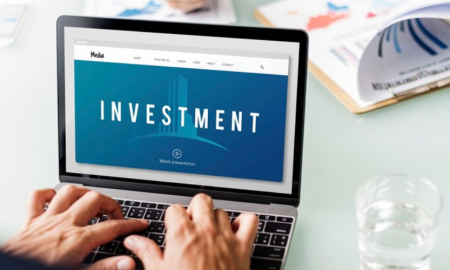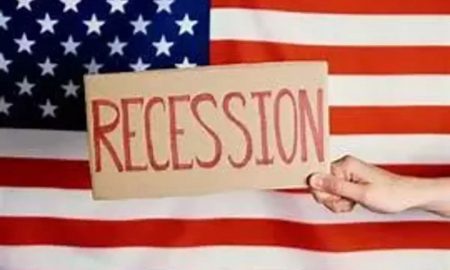
Unsecured Loans: Borrowing Without Putting Your Assets on the Line

Need money for a dream vacation, a home improvement project, or an unexpected expense? An unsecured loan might be the answer. Unlike secured loans that require collateral like your car or house, unsecured loans rely solely on your creditworthiness to qualify. But before you dive in, understanding how they work and their pros and cons is crucial.
What Is an Unsecured Loan?
Imagine a loan based on your good name and track record, not your possessions. That’s an unsecured loan! These loans, like personal loans, student loans, and even credit cards, trust your ability to repay based on your credit history, income, and debt-to-income ratio. No car title or house deed is required!
Types of Unsecured Loans: Each One With a Purpose

Freepik | jcomp | Personal Loans can cover almost anything from debt consolidation to medical bills.
- Personal Loans: An all-rounder, these flexible loans can cover almost anything from debt consolidation to medical bills. Amounts typically range from a few hundred dollars to tens of thousands, with repayment terms of 2 to 7 years.
- Student Loans: Specifically designed to finance education expenses like tuition and fees. They come in two flavors: federal loans backed by the government and private loans from banks or lenders. Both are unsecured but have different interest rates and repayment options.
- Credit Cards: Offering revolving credit, credit cards let you borrow up to a limit, repay, and borrow again. Responsible use means avoiding interest charges, making them handy for everyday purchases. Secured cards with cash deposits exist, but many popular cards are unsecured.
How Unsecured Loans Work: Dive Into the Details
Unsecured loans, despite their different forms, share some common mechanics:
- Personal Loans: After approval, you receive a lump sum upfront and repay in fixed installments over a set term.
- Student Loans: Similar to personal loans, you get a lump sum but with specific limits based on your education level. The funds usually go directly to your school, and any leftover amount comes to you. Repayment terms can be flexible, often allowing deferment while in school.
- Credit Cards: Access a credit line, spend within your limit, and make minimum monthly payments (ideally paying off the entire balance to avoid interest).
Unsecured vs. Secured Loans: The Collateral Divide

Freepik | Unsecured loans typically come with elevated interest rates.
The key difference lies in collateral. Secured loans, like car loans or mortgages, use your car or house as security. If you default, the lender can seize the asset to recoup their losses. Unsecured loans don’t require collateral, offering freedom and flexibility, but come with potential downsides:
- Higher Interest Rates: Lenders take on more risk without collateral, so expect higher interest rates compared to secured loans.
- Stricter Qualification Requirements: A strong credit score and healthy income are usually essential for approval, especially for favorable rates.
- Smaller Loan Amounts: Generally, unsecured loans max out at lower amounts than secured loans, except for student loans.
Pros and Cons: Weighing the Unsecured Loan Equation
Pros:
- No Collateral Risk: Your car, house, or other valuables are safe, even if you default.
- Quick and Easy: Applications can be completed online or in person, and approval often comes quickly.
- Flexible Use: Personal loans and credit cards offer versatility for various expenses.
Cons:
- Higher Interest Rates: Be prepared for potentially higher interest charges compared to secured loans.
- Tougher Qualification: A strong credit score and stable income are usually required.
- Lower Loan Amounts: Max borrowing limits are typically lower than secured loans.
Qualifying for an Unsecured Loan: What Lenders Look for
Freepik | rawpixel.com | An Unsecured Loan requires a robust credit score for approval.
To get approved, lenders assess your:
- Credit History: A positive history with on-time payments and a mix of credit types is key.
- Credit Score: A generally strong score is needed, with lower scores potentially leading to higher interest rates.
- Debt-to-Income Ratio: This ratio shows how much of your income goes towards debt payments. Lenders have thresholds to ensure you can manage the new loan.
- Income: Lenders want to see stable income to ensure your ability to repay.
Navigating the Application Process
- Prequalification: Kickstart the process by prequalifying with lenders to assess eligibility and explore potential loan offers without impacting your credit score.
- Application: Once you’ve identified a suitable lender, complete the application process, providing the necessary documentation and personal details to facilitate loan evaluation.
- Decision Time: Await the lender’s decision, typically delivered within a day of application submission, reflecting on factors such as creditworthiness, income stability, and debt obligations.
- Funds Disbursement: Upon approval, await funds disbursement as per the lender’s instructions, ensuring prompt repayment to avoid accruing additional interest.
Unsecured loans represent a beacon of financial freedom, offering borrowers the means to address diverse needs and aspirations. By understanding the intricacies of unsecured loans, from their types and operations to qualification criteria and application processes, individuals can navigate the borrowing landscape with confidence and clarity.
So, whether it’s embarking on a new educational journey or tackling unexpected expenses, unsecured loans stand ready to pave the way toward a brighter financial future.
More in Loans & Mortgages
-
`
Curious About Travis Kelce’s Net Worth? Here’s the Scoop!
Travis Kelce’s name echoes through NFL stadiums, synonymous with athletic prowess and electrifying plays. But beyond his touchdown celebrations and record-breaking...
June 10, 2024 -
`
Everything You Need to Know About an Assumable Mortgage
What is an Assumable Mortgage? Whether you are a buyer or a seller, understanding the concept of assumable mortgages can open...
June 6, 2024 -
`
Layoff vs. Fired – Understanding the Crucial Differences
When it comes to job loss, understanding the distinction between being layoff vs. fired is crucial. While both situations result in...
May 30, 2024 -
`
When Are Business Taxes Due 2024? Essential Dates and Deadlines
Tax deadlines can be daunting, but fear not! Let’s break down everything you need to know to stay on top of...
May 22, 2024 -
`
How Much Does Jeff Bezos Make Per Hour? It’s More Than You Think!
Jeff Bezos, a name synonymous with innovation and wealth, stands as one of the world’s richest individuals. While Bernard Arnault and...
May 16, 2024 -
`
What is Portfolio Investment Entity (PIE) and How Can it Benefit You?
In the intricate world of finance, individuals seek avenues to optimize their investments while minimizing risks. One such avenue gaining traction...
May 9, 2024 -
`
What is a Bank Statement? Understanding its Definitions, Benefits, and Prerequisites
Ever wondered where your money goes? A bank statement is like a financial report card, giving you a clear picture of...
April 30, 2024 -
`
Branded Content: A Genuine Way to Connect With Your Audience
Have you ever binge-watched a series on Netflix, only to later realize that the beverage everyone’s sipping on is that brand...
April 23, 2024 -
`
What Car Does Jeff Bezos Drive? Find Out Inside His Exclusive $20 Million Collection
Have you ever wondered what car does Jeff Bezos drive? This man’s tastes in vehicles are as expansive as his business...
April 17, 2024















You must be logged in to post a comment Login